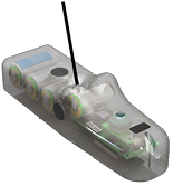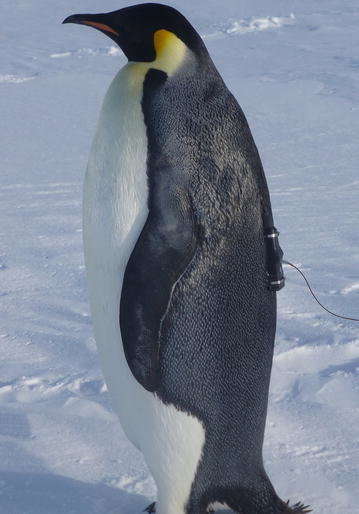
Features
- Argos
- Depth
- Temperature
- Light Level

WEIGHT
99g
LIFE
180 days
DIMENSIONS (mm)
109 x 32 x 26
Key Benefits
The SPLASH10-283 is a data-archiving, Argos satellite transmitting tag designed for tracking vertical and horizontal movements of free-range marine animals like penguins.
The SPLASH10-283 tag works on any animal that exposes the tag above the surface of the water. The SPLASH10-283 has been used on sea turtles and pinnipeds but has been very successful on penguins.
Key Features Available in the SPLASH10
- Highly Customizable Data Collection and Transmitting Schedule—researchers have the power to customize and prioritize data transmission to capture the information that is most significant for the project. Deployments can be tailored to achieve unique experimental objectives. Flexible transmissions provide the ability to extend the life of the tag by focusing on specific seasons or times of the year.
- Full Data Archive Available on Recovery—SPLASH10 tags contain one GB of onboard memory for archiving data. This means when you recover your tag, your full data set is available, even if the battery is dead—data are maintained in the archive for up to 25 years.
- Specialized Shapes—SPLASH10 tags come in over 60 shapes and configurations. They contain an array of sensors that gather a myriad of data products.
- The Portal Advantage—SPLASH10 tags are supported by the Wildlife Computers Data Portal, a collection of data management tools and services. Developed specifically for the display and investigation of data from Wildlife Computers tags, the data portal streamlines the processes of acquiring, preserving, and sharing data services. The portal helps collect, prepare, and analyze the data returned from the tag—via Argos or the archive. Data are easily sorted, filtered, searched, uploaded, and shared. You can see a Google Earth display of your deployment track, color-coded to show the relative age of each location. You can also set up a live KMZ to get data into your own monitoring system.
Adelie Penguin Tracking
Satellite trackers tell us where the penguins travel to when they are out at sea feeding.
Penguins are fitted with transmitters before they depart to sea to feed. The trackers transmit signals that can be detected by overhead satellites. Each time a satellite receives a tracker signal, the exact location of the bird can be calculated. These locations are plotted on a map, and the positions linked together to show the entire foraging trip of the penguin whilst at sea.

